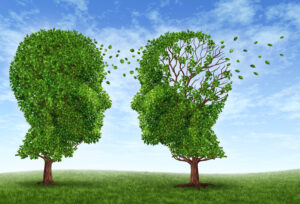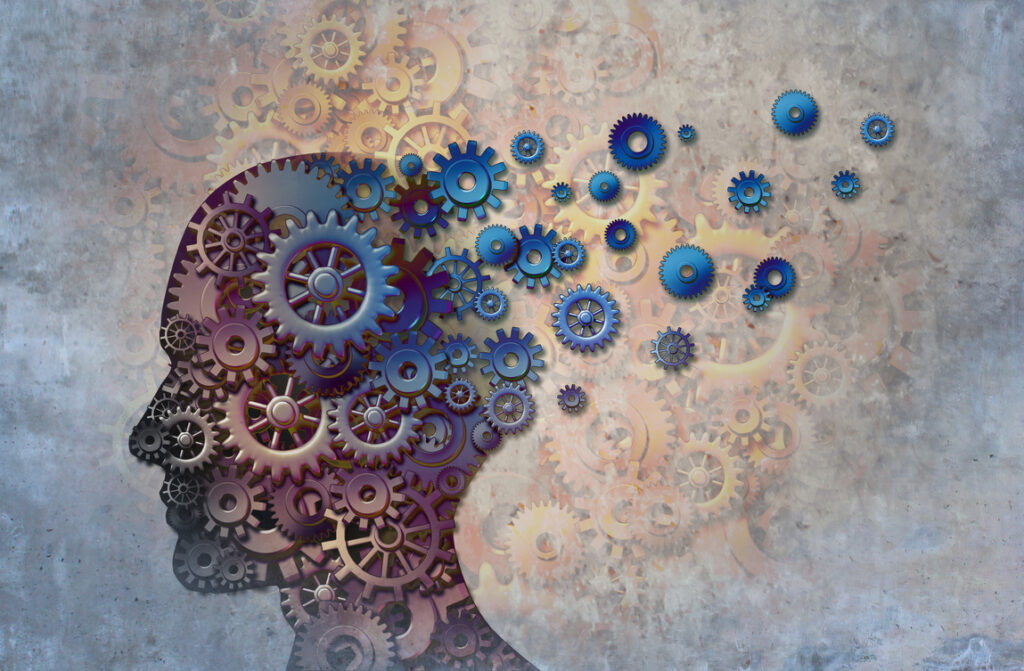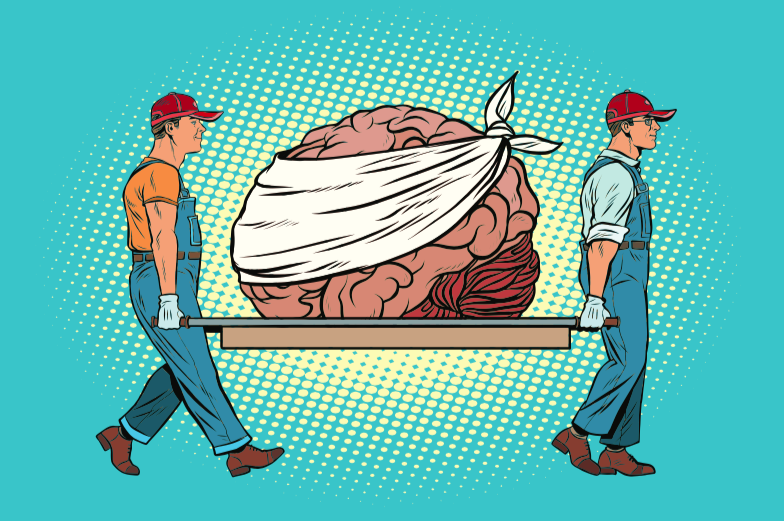Brain injury is incredibly common in the United States, with a staggering 2.8 million Americans sustaining TBI annually - and TBI is just one category of brain injury. However, most TBIs experienced are mild, commonly called concussions. Additionally, nearly 90% of people affected by TBI are treated and released from an emergency department. What happens then? If the patient is still showing TBI symptoms - emotional, physical, or cognitive - they should reach out to our rehabilitation center. At NeuLife, our TBI rehabilitation programs are designed to promote recovery to the highest level of functional independence and successful community reintegration.
Now that you know how prevalent TBI is in the US, let us go deeper into what TBI actually is.
Traumatic Brain Injury (TBI) is just a subgroup of brain injury. Generally, brain injury is categorized as pre birth or acquired. The former refers to an injury, which is hereditary, congenital, degenerative, or introduced by birth trauma. Whereas, acquired brain injury (ABI) appears after birth, commonly due to external factors. ABI can then be divided into three different types:
Physicians specialized in brain injury can provide effective and comfortable brain injury rehab to patients suffering from all types and severities of brain injury.
TBI is sustained as a result of external trauma, such as a fall or motor vehicle accident. However, as the CDC explains, certain societal groups are most at risk. According to the data from 2014, the factor that makes you most at risk of sustaining TBI is your age. Also, people in different age groups are at the highest risk of sustaining a different type of TBI.
They found that the highest rate of deaths, hospitalizations, and ED visits was experienced by persons 75 years of age and older - ED visit rates were also highest for children 0-4 years old.
Overall, falls are the leading cause of TBI-related death, hospitalization and ED visits. Adults 55 years of age and older are at the highest risk across all severity levels. However, children aged 0 to 4, and 0 to 17 were also at the highest risk of TBI-related ED visits, and hospitalizations, respectively.
As we age, we are exposed to different environments and our lifestyles change. Therefore, motor vehicle crashes were the leading cause of death for persons 15-34 and older adults aged ≥75 years, and of hospitalization for persons aged 15 to 44 years of age. Whereas, children aged 5 to 14 years old experienced the most TBI-related ED visits due to being struck by, or against an object.
Remember, if you need assistance and support with recovering from TBI, regardless of the severity level, contact our TBI rehabilitation center. We are experts in providing physical, emotional and psychological treatments to make your everyday activities easier and more fulfilling.

NeuLife Rehabilitation is one of the LARGEST residential brain injury rehabilitation facilities in the Southeast with specialized rehabilitation programs for a wide range of catastrophic injuries. We are accredited by the Commission on Accreditation of Rehabilitation Facilities (CARF) in Brain Injury Specialty Programs and Residential Rehabilitation. Our skilled clinical experts work with each patient individually to create a customized rehabilitation program best suited to the patient’s needs.
Every day we work with the goal of providing our patients with the highest quality of care. We believe that healing, wellness, and personal fulfillment are best accomplished in a positive and uplifting therapeutic environment where staff encourage, assist, and support all of their patients. And that is what we do!
To learn more about our facility, our staff and our work contact us, or schedule a tour! You can call us at 800-626-3876, or send us an email on info@neuliferehab.com. Find us at 2725 Robie Avenue, Mount Dora, Florida 32757.
The material contained on this site is for informational purposes only and DOES NOT CONSTITUTE THE PROVIDING OF MEDICAL ADVICE, and is not intended to be a substitute for independent professional medical judgment, advice, diagnosis, or treatment. Always seek the advice of your physician or other qualified healthcare providers with any questions or concerns you may have regarding your health.
Many of us are so overwhelmed by the process of TBI diagnosis, treatment, and traumatic brain injury rehab, that we don’t even think to ask the important questions, or understand everything that the doctor says. A good physician will explain the tests, the diagnosis and the necessary rehabilitation in layman’s term. But, some won’t, or maybe the stress of the visit will make you forget as soon as you leave the office.
In Part 1 of this Guide, we explained some of these terms, especially the ones concerning functions and skills. In Part 2, we defined the terms related to some of the symptoms of TBI. Today, in Part 3, we’ll talk about the glossary concerning medication used to treat TBI.
Medication used to decrease the possibility of a seizure (e.g., Dilantin, Phenobarbital, Mysoline, Tegretol).
Medication used to treat depression.
Medication used mainly to slow down the heart, by blocking the action of hormones like adrenaline. Commonly used beta-blockers include:
Neuroleptics, also known as antipsychotic medications, are used to treat and manage symptoms of many psychiatric disorders. They can be divided into two classes: first-generation (“typical" antipsychotics) and second-generation (“atypical" antipsychotics).
Antiepileptic drugs (commonly known as anticonvulsants or antiseizure drugs) are a varied group of pharmacological agents used in the treatment of epileptic seizures. Many seem to act as mood stabilizers and are used for the treatment of neuropathic pain.
Watch this film by Speed Pharmacology about antiepileptics –“Pharmacology - ANTIEPILEPTIC DRUGS (MADE EASY)”, to find out more:
May be used for pain relief and pain management.
May lessen feelings of uncertainty, nervousness, and fear.
May be used to prevent blood clots.
May be used to reduce muscle spasms or spasticity.
May be used to induce sleep or depress the central nervous system in areas of mental and physical response, awareness, sleep, and pain.
May be used to increase attention and alertness.
Amantadine belongs to the class of medications called adamantanes. It is thought to work to control movement problems by increasing the amount of dopamine in certain parts of the body.
Remember, when you talk to your doctor about taking any of these, or other drugs, mention what other prescription and nonprescription medications, vitamins, nutritional supplements, and herbal products you are taking, or plan to take.
Stay tuned for the fourth part of this TBI glossary guide.
NeuLife Rehabilitation is one of the best TBI rehab centers with specialized catastrophic rehabilitation programs for a wide range of catastrophic injuries.
Our programs for traumatic brain injury rehabilitation are customized to meet the individual needs of each patient. Our care plans are structured to promote the highest level of functional independence and successful community reintegration. Through the skills and experience of our highly trained team of clinical experts, we are able to treat a wide range of diagnoses and injuries at our brain injury rehab facility.
If you have any more questions concerning neuro rehab, brain injury rehab, or any other issue regarding traumatic brain injury rehabilitation, call us to make an appointment today. You can also schedule a tour to visit our best brain injury facility.
Sources:
https://www.headinjury.com/tbiglossary.htm
https://www.biausa.org/brain-injury/about-brain-injury/treatment/medications
The material contained on this site is for informational purposes only and DOES NOT CONSTITUTE THE PROVIDING OF MEDICAL ADVICE, and is not intended to be a substitute for independent professional medical judgment, advice, diagnosis, or treatment. Always seek the advice of your physician or other qualified healthcare providers with any questions or concerns you may have regarding your health.
According to the National Institutes of Health (NIH), the incidence of traumatic brain injury (TBI) in the United States is approximately 1.5–2 million cases per year, and it is the foremost cause of injury and neurological disability among children, young adults and seniors. Despite the frequency with which it occurs, the general public maintains misconceptions about traumatic brain injuries.

Because of the prolonged (and at times incomplete) recovery process, TBI patients may go back to their roles in their respective communities while still dealing with their particular deficits, and while undergoing the rehabilitation process. Due to existing misconceptions about TBI, they are often expected to perform their activities at the same level as pre-injury. When this occurs, it can often lead to frustration and anger which can, in turn, impede the healing process.
A common misconception is that people who have experienced a traumatic brain injury no longer have the same emotional needs. While their quality of life and cognitive and physical functions may differ, people with have suffered a brain injury have the same emotional needs as each one of us: they want to feel loved, useful, needed, to be treated with respect, to have personal space, and to retain control over their lives.
Many people believe that an adult with a brain injury shouldn’t be a part of the discussion concerning his or her care, treatment, or any other plans to assist in solving the individual’s challenges. It is sometimes difficult for loved ones to accept the fact that it is important for a person with a brain injury to be part of any dialogue concerning his or her treatment, care, prognosis, or rehabilitation options.
If possible, even the most trying or upsetting information should be discussed with an adult who suffers from a TBI.
According to Thomas J. Guilmette, it is not only the general public who hold misconceptions about TBI victims; even health professionals who don’t specialize in brain injuries have problems correctly assessing the length and extent of recovery, and who don’t have the knowledge about the multiplicity of deficits (mainly with respect to mental and behavioral impairments). Occasionally, patients with a TBI are even misdiagnosed as learning disabled or mentally ill.
That is why it is so important to seek professional medical help at a brain injury center or brain injury clinic, where knowledge and awareness of this condition are of the highest possible level.
Many people believe that catastrophic rehabilitation (rehabilitation after TBI) will take up to two years to complete and that the recovery will be steady -- this is another misconception.
Brain injury rehabilitation is a very complex process, ideally performed at a brain injury center, where patients respond to treatment individually. No two patients are the same; whenever in doubt, ask your physician or medical professional at your brain injury clinic about therapy progress and prognosis.
A person with a traumatic brain injury may be able to do something effortlessly one day, then find the same thing problematic the next day. Even though much of the recovery process does indeed occur during the first two years, it is not necessarily complete by the end of two years -- the catastrophic rehabilitation process can continue throughout a lifetime.
For many TBI patients (and their families) getting to a point where everything is “back to normal” is the Holy Grail. Every day, they do everything in their power to come one step closer towards this goal.
Opening oneself to the possibility that the “new normal” doesn’t need to be bad may create the space needed for new dynamics and relationships in the family to blossom. No one is denying that dealing with a TBI is a challenging time for everyone, but clinging to past behaviors, traits, abilities, and ambitions has the potential to slow down recovery.
The misconceptions listed above make it difficult for a person affected by TBI, and his or her loved ones, to regain both health and position in society. In such a trying time, what is most needed is understanding, knowledge, awareness, and empathy.
The truth is that no one can do this alone. Every patient deserves support from a great team of medical professionals to assist them throughout the process of brain injury rehabilitation. NeuLife Rehabilitation offers just that support.
NeuLife Rehabilitation is one of the largest residential post-acute rehabilitation facilities in the Southeast, with specialized rehabilitation programs for a wide range of catastrophic injuries.
Our programs are customized to meet the individual needs of each patient, and care plans are structured to promote the highest level of functional independence and successful community reintegration. Through the skills and experience of our highly trained team of clinical experts, we are able to treat a wide range of diagnoses and injuries at our brain injury center.
If you have any more questions concerning catastrophic rehabilitation or any other issue regarding traumatic brain injury (TBI), call us to make an appointment today. You can also schedule a tour to visit our brain injury clinic.
The material contained on this site is for informational purposes only and DOES NOT CONSTITUTE THE PROVIDING OF MEDICAL ADVICE, and is not intended to be a substitute for independent professional medical judgment, advice, diagnosis, or treatment. Always seek the advice of your physician or other qualified healthcare provider with any questions or concerns you may have regarding your health.
There are two types of brain injuries: traumatic, when an external object causes brain tissue damage, and non-traumatic, also called acquired brain injury, the result of change, damage or infection internal to the body.
There are many different causes of non-traumatic brain injuries, some of which are more common than others. They include infections, lack of oxygen, tumors and bleeding in the brain, which we describe in detail below
NeuLife’s brain injury rehabilitation program provides care for patients with traumatic and non-traumatic injuries.
Read about traumatic brain injury rehab in this article.
Brain infections can occur as a result of viruses or bacteria. Staph, for example, spreads with the blood to the brain, damaging brain tissue. One of the most common brain infections, meningitis, can be caused by a virus or bacteria. More common to contract in childhood years, it causes strong headaches, fever, sleepiness, and nausea, among other symptoms. It should be treated immediately after diagnosis, as the complications may be severe.
A related condition, encephalitis, is an inflammation of the brain, caused by different types of viruses and characterized by brain swelling. The swelling itself can impede brain function until it goes down. It may also damage surrounding brain tissue, or result in other problems, such as a loss of oxygen to the brain or fluid in the brain. Brain swelling is often the product of an infection, but can also be due to an untreated autoimmune disorder, cancer, and even some allergic reactions.
Not all brain tumors are cancerous, but even benign tumors can cause brain damage. When a brain tumor pushes on some brain area or deprives it of oxygen, the functionality of that area becomes limited. Removing the tumor may fix the problem, but brain surgery is always a great risk. If the tumor does not show signs of growing or changing, your doctor might suggest you leave it in place and avoid the risks of removal.
When a tumor is due to cancer, your doctor might remove it, recommend chemotherapy or radiation, or offer some combination of these treatments.
A stroke is a cardiovascular event during which the blood supply to the brain is cut off. Without oxygen, the brain cells start to die. Stroke needs immediate response and treatment. The main reason for it is poor cardiovascular health, though anyone—including children—can suffer from a stroke. NeuLife’s brain injury rehab program specializes in taking care of patients who have suffered a stroke.
A related occurrence, called a transient ischemic attack (TIA), is sometimes called a mini-stroke. These episodes, which sometimes occur multiple times, produce a temporary blockage that quickly resolves. If you have suffered a TIA, you are at risk of a stroke. Some people also experience minor brain damage as a result of TIA.
Locked-in syndrome is often caused by a stroke, and results in brain damage so severe that the person loses his ability to speak or move, and may be able to only move their eyes. The person is fully conscious and realizes the situation; however, they are without the ability to interact, literally locked into his or her brain.
NeuLife is a Residential Post-Acute Rehab facility specializing in brain injury rehabilitation. Its program includes physical medicine and rehabilitation medical management, psychiatric and neuropsychological services, physical, occupational, speech and cognitive therapies, behavioral, dietary and vocational counseling, and more. Beautifully situated on 43 acres in Mount Dora, Florida, its inpatient rehab facility comprises over 60,000 square feet and contains 54 private rooms or suites. If you would like more information about NeuLife Rehabilitation Services, please contact us.
The material contained on this site is for informational purposes only and DOES NOT CONSTITUTE THE PROVIDING OF MEDICAL ADVICE, and is not intended to be a substitute for independent professional medical judgment, advice, diagnosis, or treatment. Always seek the advice of your physician or other qualified healthcare provider with any questions or concerns you may have regarding your health.

We know that choosing the next step in your recovery from a catastrophic illness or injury is complex. Together, we can help you take the next step.
Contact us with any questions today.